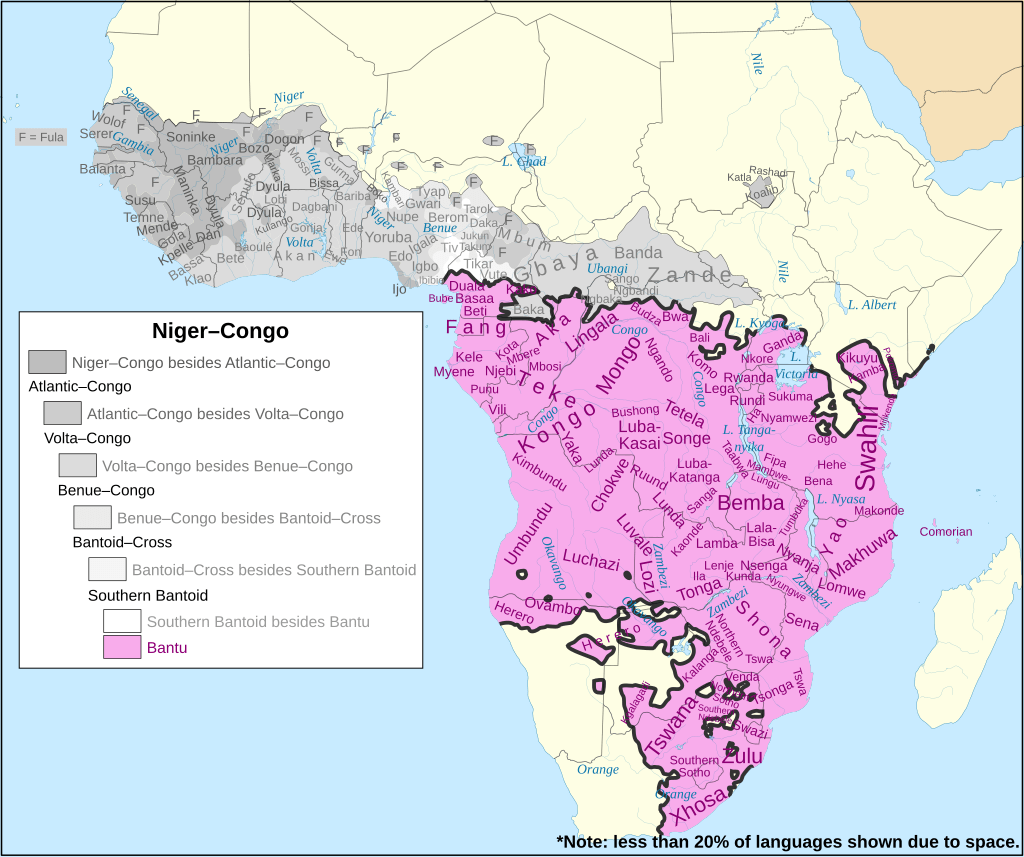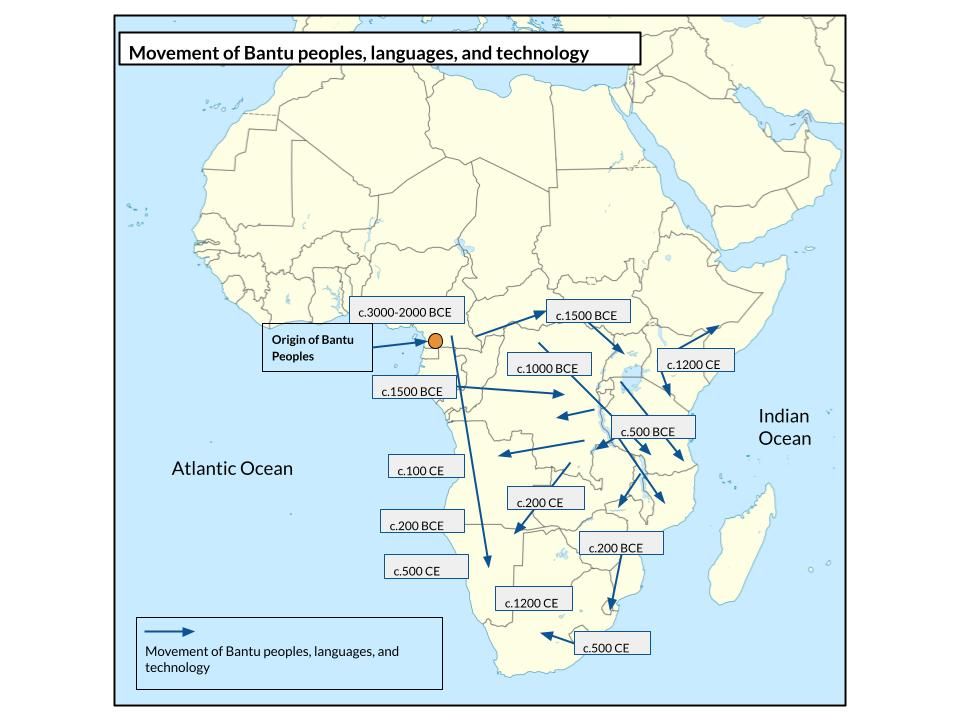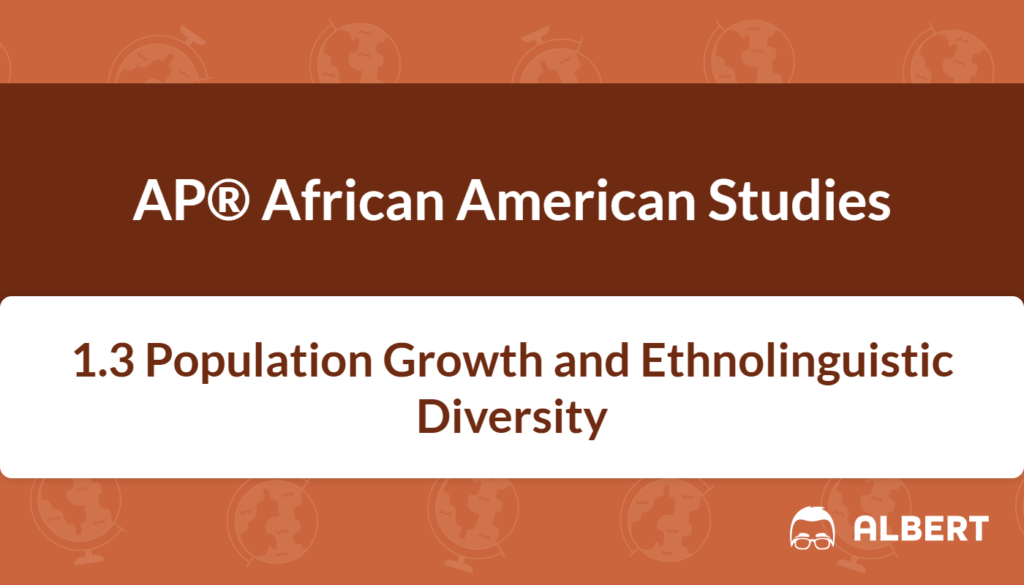What We Review
Understanding Population Growth and Ethnolinguistic Diversity: The Bantu Expansion
The story of the Bantu people and their expansion is one of Africa’s most significant historical developments. This process involved millions of people who spoke Bantu languages, spreading across vast regions of the continent. By looking at how population growth and new farming methods fueled their journeys, it becomes clear why this expansion had a deep impact on Africa’s linguistic diversity and cultural heritage.
Understanding the Bantu expansion is crucial. It explains why so many different languages exist in West, Central, and Southern Africa and how African American ancestry is linked to these communities. This post explores the causes, timeline, and lasting legacy of the Bantu expansion, helping to show how history and identity are closely connected.
The Bantu People
The term “Bantu” refers to a large group of people in Africa who share related languages and cultural practices. They trace their beginnings to regions around present-day Cameroon and Nigeria. Over time, these communities grew in number and started moving outward. As they traveled, they carried their languages, customs, and innovations to new areas.
Because “Bantu” describes a language family, there are many languages within this group. Swahili, Zulu, Kikongo, and Xhosa are just a few examples. When people speak these languages, they use similar vocabulary and sentence structures that point to a common origin. For generations, this shared identity provided a base for trade, kinship, and social interaction among far-flung communities.
Causes of Bantu Expansion
One main cause of the Bantu expansion was technological and agricultural innovation (LO 1.3.A; EK 1.3.A.1). At first, Bantu communities learned to create and use metal tools for farming. This development led to more efficient tasks, such as preparing the soil. Additionally, the cultivation of bananas, yams, and grains was perfected. This reliable food supply supported larger populations, which led to bigger villages and towns.
As settlements grew, more people needed farms, pastures, and living space. Therefore, groups journeyed into new territories, taking their language and culture with them (EK 1.3.A.2). This continued for many centuries, eventually leading to the spread of Bantu speakers across broad parts of Africa. Indeed, the growth of stable food sources, improvements in tools, and the need for more land worked together to push the Bantu expansion ever forward.
- Technological innovations:
- Metal tools (e.g., ironworking)
- Improved farming practices
- Agricultural base:
- Bananas, yams, grains
- Reliable food surplus
- Population pressure:
- Larger settlements
- Movement into new lands
The Bantu Expansion Explained
From about 1500 BCE to 500 CE, Bantu-speaking peoples moved out of their Central West African homelands (EK 1.3.A.2). They crossed rivers, traveled through forested regions, and reached areas both north and south of the Equator. Historians often divide this expansion into phases to show how migration patterns shifted.
West Africa
Some early Bantu-speaking communities remained in West Africa. They interacted with neighbors, forming trade networks and alliances. Over time, these encounters shaped local cultures, languages, and economies. Because their tools and farming knowledge proved valuable, it gave Bantu farmers a strong advantage in local production of food.
Central Africa
Central Africa also saw the arrival of many Bantu-speaking families. Rivers like the Congo made it possible to move into fertile river basins. Groups settled there, creating new centers of agriculture. Additionally, local populations adopted Bantu languages and customs, blending them with their own traditions.
Southern Africa
Eventually, major population groups reached Southern Africa. This last phase of the Bantu expansion tied the entire region together socially and linguistically. In many regions, Bantu languages became the main form of communication. Over time, these languages produced countless local dialects and cultures, reflecting adaptation to new climates and interactions with new communities.
The key elements of this expansion were:
- Steady migration over many centuries
- Use of trade and social ties to build connections
- Adaptation to different climates, leading to cultural variety
Effects of Bantu Expansion on Linguistic Diversity
Today, one clear result of the Bantu expansion is the staggering number of languages in Africa. Bantu languages alone number in the hundreds, with each having unique traits (LO 1.3.B; EK 1.3.B.1). In West, Central, and Southern Africa, many communities speak versions of these languages, maintaining close ties in grammar and vocabulary.

Because populations moved and lived among other groups, new words and language patterns arose. People often borrowed terms from neighbors, blending new ideas into their speech. These interactions shaped cultural identity, giving local communities a sense of belonging. For students studying African history, understanding these linguistic links shows how culture travels with language, establishing bonds that can last for centuries.
Genetic Heritage and Legacy
The movement of Bantu-speaking peoples affected not only the language but also their genetic heritage, which merged with diverse populations, resulting in a vast network of shared ancestry. Many African Americans share roots in these Bantu-speaking communities, reflecting how the Americas became home to people from West and Central Africa, especially during the Atlantic slave trade (LO 1.3.B).
This connection is meaningful for those tracing family histories. Cultural elements, such as culinary traditions or oral histories, may reflect the legacy of Bantu-speaking ancestors. In some cases, dance styles, ceremonial customs, or musical rhythms also point to a strong link with Bantu-based heritage. As a result, the Bantu expansion helps explain part of the story of African American identity.
Bantu Expansion and Its Modern Significance
Today, the many languages, traditions, and beliefs descended from the Bantu expansion remain vital. In countries like Tanzania, Kenya, South Africa, and the Democratic Republic of the Congo, Bantu languages are used in everyday life. Swahili is an official language in several nations, serving as a tool for business, government, and social cohesion.
Efforts continue to preserve and celebrate Bantu languages, such as translating educational materials and promoting local literature. Some people worry about language loss, but activism and community events help maintain traditions. Preserving Bantu culture is about more than holding on to history. It is a way to honor the identity and achievements of the millions who speak these languages today.
Required Source: Map Showing the Movement of Bantu Peoples, Languages, and Technologies
A useful reference for understanding the scope of the Bantu expansion is a map illustrating their migration routes. This map shows how Bantu-speaking communities spread from the Cameroon-Nigeria border region all the way to Southern Africa:
- Arrows typically indicate the major paths of expansion.
- Symbols highlight areas where ironworking sites were established.
- Colors often distinguish regions where Bantu languages became dominant.

In examining this map, note how rivers and fertile land influenced the directions of migration. Studying these details helps visualize how population growth and technology combined to fuel one of history’s most remarkable migrations.
Quick Reference Chart: Important Vocabulary and Definitions
Below is a list of key terms related to the Bantu expansion, population growth, and ethnolinguistic diversity.
| Term | Definition or Key Feature |
| Bantu | A large language family originating in West/Central Africa. |
| Bantu Expansion | The migration of Bantu-speaking peoples (1500 BCE to 500 CE) |
| Population Growth | An increase in the number of people, often due to technological innovations |
| Ethnolinguistic Diversity | Variety in both ethnic backgrounds and languages |
| Ironworking | The process of making tools and weapons from iron, boosting farming efficiency |
| Agricultural Innovations | New farming methods and crops (bananas, yams, grains) that encouraged surplus |
| Swahili, Zulu, Xhosa, Kikongo | Examples of Bantu languages spoken today |
| Genetic Heritage | Shared ancestry among peoples, shaped by historical migrations |
| Trade Networks | Exchange routes and relationships that helped spread goods, ideas, and customs |
| Oral Tradition | Passing down history, values, and stories through spoken narratives |
Feel free to copy and paste this chart into a separate document for quick study and review.
Conclusion
The expansion of the Bantu people is more than a historical migration. It is a defining feature in Africa’s story, shaping the continent’s population growth, agricultural practices, and cultural identities. By driving new technologies and opening up trade paths, Bantu-speaking peoples set the stage for the wide variety of languages and traditions we see today.
Studying the Bantu expansion expands understanding not only of Africa’s past, but also of the origins of African American ancestry. From iron tools to bananas and yams, each piece of the puzzle explains how societies evolve and adapt in response to their environment. Though centuries have passed, the legacy of the Bantu expansion remains strong in language, culture, and heritage.
Sharpen Your Skills for AP® African American Studies
Are you preparing for the AP® African American Studies test? We’ve got you covered! Try our review articles designed to help you confidently tackle real-world AP® African American Studies problems. You’ll find everything you need to succeed, from quick tips to detailed strategies. Start exploring now!
Need help preparing for your AP® African American Studies exam?
Albert has hundreds of AP® African American Studies practice questions, free response, and full-length practice tests to try out.









